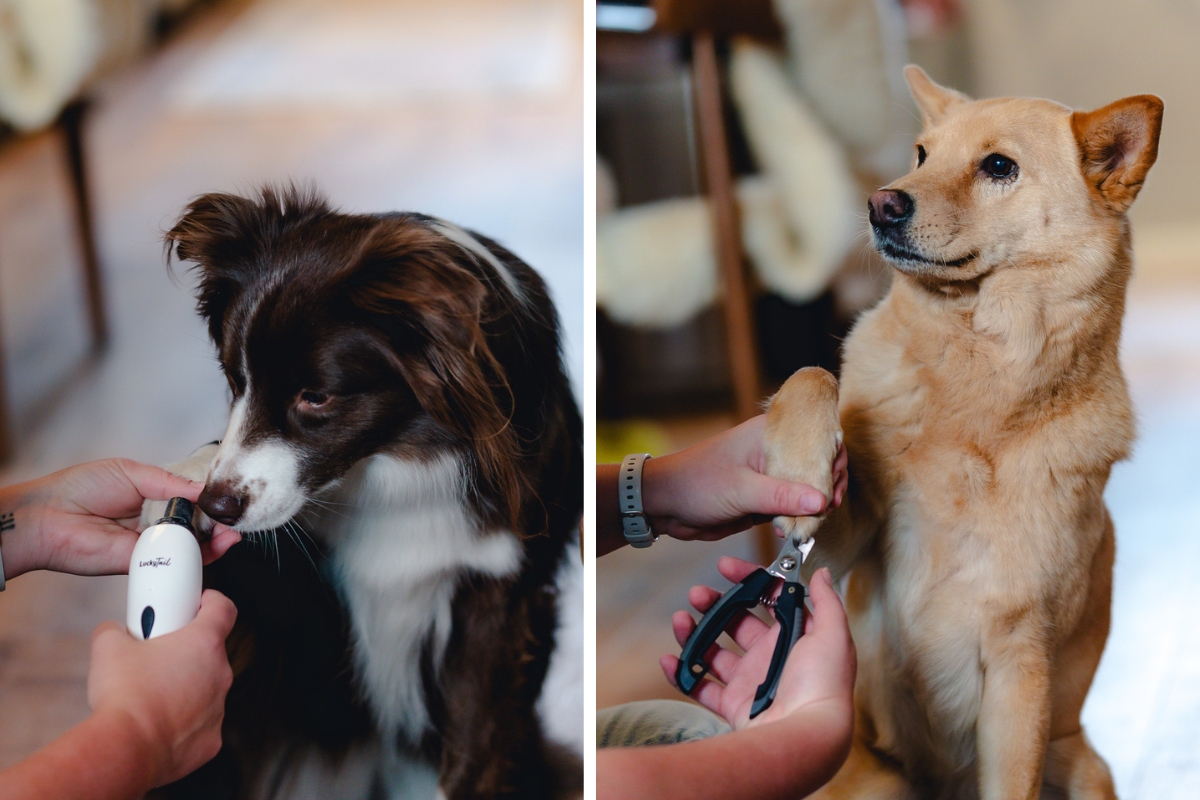There is no shortage of pet insurance companies out there. When I first decided to purchase pet insurance for June and Margot, I thought there would be like two or three major companies to compare. I was deadass wrong. Before I knew it, I was comparing 6 or 7 different pet insurance companies, with each one offering different types of coverage, different add-on options, and different price points determined by different customization options. I was immediately overwhelmed.
Luckily, dog dad is a big spreadsheet kinda guy. Nerdy, I know, but super helpful. I took a leaf out of his book and began to compile all the important details into one quick reference document. This helped me make sense of the chaos. And yes, of course I will share the spreadsheet so that everyone can benefit from all the time I spent requesting quotes, crawling through policy samples, and eventually unsubscribing from the fuckton of emails I kept getting sent from companies I requested quotes from (seriously, if you get nothing else out of this post, you will at least be spared the inbox spam).
Choosing the right pet insurance can be tough. I highly recommend you start with a solid understanding of what pet insurance is and how it actually works before you start looking at companies. So, if you haven’t read my last post, this is your sign to go read it. Or at least skim it.
Quick Disclaimer: I Am Only Human!
First and foremost, I wrote this post and the last one entirely based upon my own research. I was not compensated or sponsored in any way from any of the companies I talk about here, so if you’d like to send a little love and appreciation my way, I would be most grateful! Your support helps keep the blog ad-free and makes this endeavor a lot more sustainable for me.
Secondly, please, please, please understand that all of this information is based on my own research. I requested quotes from each of these brands, scoured through their FAQs, and even downloaded sample policies to ensure I clearly understood the information provided. Sometimes I was not able to find specific information, or the information provided wasn’t straightforward. There is a lot of nuance when it comes to insurance! Also, I’m only human, and I can certainly make mistakes or misinterpret something. Oh, and insurance cost and coverage can vary based on your dog and where you live, so if your quotes are radically different from mine, that is why.
All this to say, I do recommend doing your own research on whatever company you choose, and please reach out to them directly with any questions or concerns you have. Lastly, information changes! If you notice something in this post that is out of date, please email me to let me know at blair@thedinkdogmom.com.
What Pet Insurance Brands are In the Spreadsheet?

A lot! I polled my followers on Instagram to compile a list of the most popular pet insurance brands. I then added to this list the most common brands I found in my own research. While this is not a comprehensive list of pet insurance companies, it is quite robust and does cover the major players.
The pet insurance brands included in the spreadsheet are:
- Trupanion
- Figo
- Healthy Paws
- Fetch
- Lemonade
- Pets Best
- Pumpkin
- Embrace
- Nationwide
- ASPCA
- Spot
How the Spreadsheet Comparing Pet Insurance Companies Works
To compare pet insurance policies, I used Margot as my case study. She is a 3 year old Australian Shepherd with no known pre-existing conditions. Whenever I requested a quote from a pet insurance brand, it was based on Margot. I aimed for a $250 deductible, $10,000 max payout, and 90% paid for each plan, regardless of what options they offered. If you see any discrepancies here (ie an unlimited max payout), that means the pet insurance company did not offer options, or it was the option closest to what I was aiming for. I also only used “base level” plans and did not include any add-on options. This allowed me to roughly compare costs, but keep in mind prices will vary based on your dog’s age, breed, and your geographic location.
The check boxes indicate if something is covered or not. Green checkboxes mean it is included at no extra cost; red checkboxes mean it can be added, but it will cost extra. I organized the spreadsheet into areas of coverage, common add-on options, and how policies work from an administrative angle. You’ll find a key at the bottom left to help you out!
Tips for Choosing a Pet Insurance Policy


Generally speaking, the more you pay monthly, the less your deductible is and the higher your max payout can be. This means you end up paying less for unexpected vet visits. However, you are not reimbursed for your premiums, even if you never make a claim! So, choosing a pet insurance policy is about balancing what coverage you think your dog might need with what you can afford monthly and at the vet in the event of an emergency. For example, if you select a plan with a $500 deductable (medium-high) and a 70% payout (low), your monthly payment will be lower. However, you would need to be able to afford $500 plus 30% of the anticipated vet bill in the event of an emergency.
While some pet insurance companies offer a lot of add-on options that can sound really sexy, they aren’t always as important as you might think. Take office/exam fees, for example. These fees can add up, but they aren’t the expensive part of a vet bill! Therefore, it might not be a priority for an insurance company to cover them. Similarly, coverage for lost pet fees (like a reward) sounds great, but is that something you would actually use? What strings are attached to the reward if you fund it through insurance versus out of pocket? These are the types of questions you should ask yourself when looking at the different coverage options offered by pet insurance companies.
In general, I reccomend the following:
- Balance your monthly premium with what you can reasonably afford upfront in the event of an emergency.
- Don’t get swept away by all the sexy add-ons! Prioritize the coverage you might actually need.
- Do prioritize rehabilitative/alternative care if you anticipate orthopedic issues due to breed, size, or lifestyle.
- Do NOT purchase preventative/wellness packages. They are usually not worth it.
Ladies and Gentlepeople: the Spreadsheet Comparing Pet Insurance Companies!
Just fill out your name and email below, and it will be sent straight to your inbox!
To help present all of the information I gathered in an easily digestible format, I created a spreadsheet that compares these pet insurance policies at a glance! This quick reference guide can be downloaded as a handy PDF. Just fill out your name and email above, verify you want to receive our emails, and it will be sent straight to your inbox!
Meanwhile, here are the answers to the questions I got asked the most while working on this post to help get you started!
What plan is the cheapest?
The cheapest policy I found was Lemonade. They advertise their plans starting at just $10 per month for basic coverage. This will get you a higher deductible, lower percentage paid, and lower annual max payout, but it will still provide decent coverage when facing a major accident or illness. For my case study with Margot, their policy was $36, the cheapest of all the plans I reviewed by about $10.
If you want to minimize your monthly payment, I would reccomend choosing a higher deductible and/or a lower percentage paid, but opt for at least $10,000 for an annual max payout.
What plan offers the most comprehensive coverage?
Figo offers one of the most comprehensive policies, if you add the “Extra care” package. Fetch is a very close second and does not require any add-on options.
My pet has pre-existing conditions. Will any pet insurance cover them?
While your pet can still be insured, no company will offer coverage for treatment related to a pre-existing condition…unless it is curable! Some companies will stop counting a past accident/illness as a pre-existing condition if your pet does not receive treatment for it and is symptom free for a select period of time. These companies are:
- Figo
- Healthy Paws
- Fetch
- Pumpkin
- Embrace
- ASCPA/Spot (which are kinda the same company, kinda not)
Best plan for orthopedic care?
Figo or Embrace both offer great orthopedic care, including physical therapy, alternative therapies, and mobility devices. This is great for active dogs or dogs who compete in sports, but it’s also great for dogs prone to dysplasia and/or arthritis.
What plan did you choose?
In the end, we chose Embrace pet insurance for June, Margot, and Clark. The things I really wanted out of pet insurance were:
- Good orthopedic care. Our last two dogs, Totes and Mia, both had orthopedic issues, so this was top of mind for me.
- Dental coverage in case one of the dogs ever needs an extraction.
- A virtual vet option for questions/casual concerns.
Embrace also offered affordable care for Clark, our 10 year old cat, which other companies definitely did not! I also liked that Embrace accepted curable pre-existing conditions, as Margot has had ear infections in the past and Clark had UTI issues a couple of years ago.
But remember, the best option for me might not be the best option for you, so use the spreadsheet to compare these pet insurance companies and make an informed choice that aligns with your budget, your dog, and your lifestyle!
Pin It







